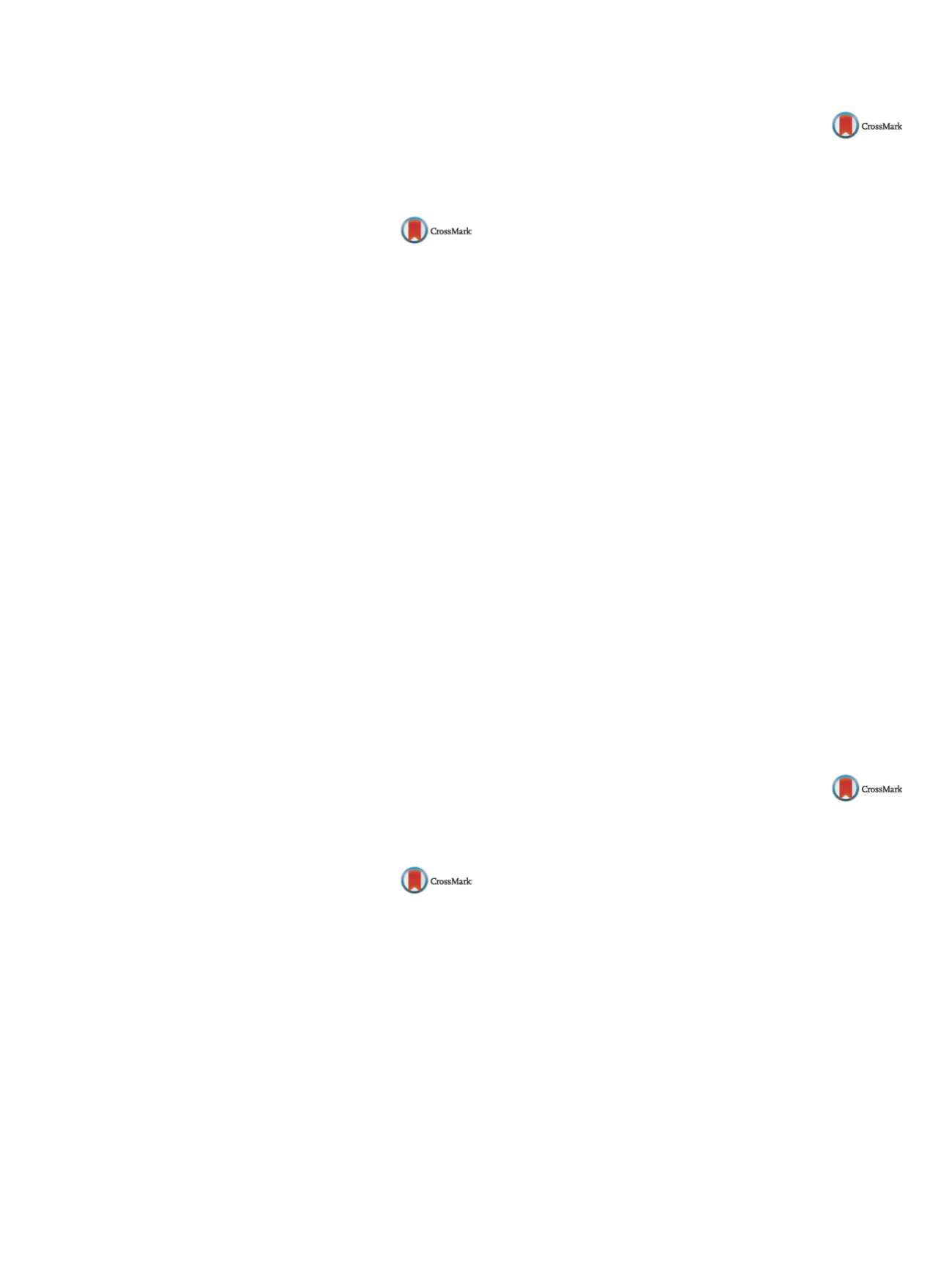

25th European Congress of Psychiatry / European Psychiatry 41S (2017) S405–S464
S417
and highlights the positive response seen in this case with psy-
chotherapy.
Disclosure of interest
The author has not supplied his declaration
of competing interest.
http://dx.doi.org/10.1016/j.eurpsy.2017.01.367EV0039
Social anxiety as a basic factor shaping
anti-vital and suicidal behaviour
among contemporary adolescents
O. Sagalakova
1 ,∗
, D .V. Truevtsev
1 , I.Y. Stoyanova
2 ,A.M. Sagalakov
11
Altai State University, Barnaul, Russia
2
Mental Health Research Institute, Tomsk National Research Medical
Center, Russian Academy of Sciences, Tomsk, Russia
∗
Corresponding author.
Introduction
In adolescence, social anxiety (SA) and anti-vital and
suicidal behavior (AB and SB) constitute a single syndrome.
Aim
The aim is to define the role of SA and its components in
shaping adolescent AB, with a subsequent risk of SB.
Materials and methods
A total of 981 adolescents participated in
the survey. The authors’ proprietary Anti-vitality and Resilience
Questionnaire and Social Anxiety and Social Phobia Questionnaire;
statistic methods: ANOVA, Correlation analysis.
Results and discussion
Twenty-four percent fromthe sample have
high SA levels, and 21.8%have clinical SA levels connectedwith high
risk of AB and SB. Adolescents find themselves in unstable condi-
tions of the psychological field reorganization (crisis), and they are
in need of actualization of means to satisfy their social motives. It
makes them vulnerable to mental disorganization under evalua-
tion conditions, and the situation is aggravated with the absence
of internalized mental regulation tools. AB, SB is higher, the higher
the SA in adolescents is. SA as a subjective perception of insufficient
means to influence the surroundings in order to satisfy social needs
can play one of the key roles in the accumulation of negative affect
in the system of mental activity, and lead ultimately to its failure.
Conclusion
Inability to satisfy their actual motives, lack of strat-
egy for self-realization and dealing with failures, and inability to
keep the targeted priority in evaluation situations lead to feeling
loss of life purpose and negative evaluation of the future and shape
AB, SB.
Disclosure of interest
The research was supported by Russian Sci-
ence Foundation (Altai State University).
http://dx.doi.org/10.1016/j.eurpsy.2017.01.368EV0040
Psychological treatment of
trihotillomania: A case study
T. Sarmiento Luque
∗
, J.M. Sanchez
Hospital De Mollet, Department of Psychiatry, Barcelona, Spain
∗
Corresponding author.
This paper presents a clinical case of trichotillomania. Therefore,
the aim of this study is to present in detail the procedure fol-
lowed in a case of trichotillomania in a public health context, using
cognitive-behavioral techniques, in order to deepen the knowledge
of the efficacy of these treatment procedures and demonstrate the
feasibility of implementation.
The results obtained show significant improvements in differ-
ent clinical aspects: first, the hair pulling behavior disappeared
completely; moreover, anxiety diminished significantly and mood
normalized. All these results allow us to conclude that the inter-
vention was successful.
Disclosure of interest
The authors have not supplied their decla-
ration of competing interest.
http://dx.doi.org/10.1016/j.eurpsy.2017.01.369EV0041
Factors associated with professional
stress at the teachers
N. Halouani
∗
, F. Smaoui , C. Derbel , R. Naoui , J. Alouloi ,
O. Amami
CHU Hédi Chaker, Psychiatry B, Sfax, Tunisia
∗
Corresponding author.
Introduction
Teaching, as a profession, is recognized as demand-
ing and stressful.
Objectives
(1) Evaluate the professional teacher stress, (2) Iden-
tify possible factors associated with it.
Methods
This is a cross-sectional study, descriptive and analyti-
cal, conducted among teachers of high school MahmoudMagdich in
Sfax. (Tunisia). Participants were asked to complete the anonymous
form detailing the socio-demographic, professional characteristics
and any work stressors.
The evaluation of occupational stress was evaluated by the scale of
“Karasek”.
Results
Thirty-six teachers replied to the questionnaires. The sex
ratio (M/F) was 0.38. The mean age was 48.77 years. The aver-
age number of years of exercise was 23.20 years and the average
number of hours worked per week was 16.25 hours. The partici-
pants stress profile according to the scale of “Karasek” was: 55.6%
stressed, 27.8%, assets, 11.1% liabilities, and 5.6% relaxed. The main
stress factors mentioned were respectively: the inadequate salary
(58.3%), difficult working conditions (52.8%), problems with stu-
dents and parents (25%) and lack of organization at work (22.2%).
Factors correlated with the profile “stressed” were: female gen-
der (
P
= 0.026), lack of pastime practice (
P
= 0.034), teaching high
school degree (
P
= 0.04), feeling that they work “too hard” in their
work (
P
= 0.005), they are “the end” at the end of the working day
(
P
= 0.015) and low social support (
P
= 0.005).
Conclusion
The occupational stress among teachers was quite
important. Knowing how to identify factors and taking action
would be interesting for the guarantee development for teachers.
Students would be the ultimate beneficiaries.
Disclosure of interest
The authors have not supplied their decla-
ration of competing interest.
http://dx.doi.org/10.1016/j.eurpsy.2017.01.370EV0042
Personal and pathopsychological
features of patients with somatoform
disorders in primary care
B. Tsygankov
∗
, A. Kulichenko
Moscow State Medical Dental University, Department of Psychiatry,
Narcology and Psychotherapy, Moscow, Russia
∗
Corresponding author.
Introduction
Somatoform disorders are a therapeutic challenge
for primary care physicians. Various studies show low efficacy of
psychotherapy for these patients, and the need for differentiated
approach to their treatment.
Objective
Explore the differences between pathopsychological,
personal characteristics of patients with somatoform disorders.
Methods
It was carried out psychometric evaluation of 108
patients with different clinical variants of somatoform disorders,
using SCL-90-r, Leonhard questionnaire.
Results
Patient with somatization disorder (SD) had maximum
values on the “somatization”, “depression”, “hostile”, “paranoid”
scales; a high level of anxiety. Singularity personality structure
of these patients defining feature of exaltation, excitability, emo-
tivity. Patients with undifferentiated somatoform disorder (USD)
also showed high levels of somatization, anxiety and obsessive-
compulsive, interpersonal sensitivity, phobic anxiety. Patients
with stable somatoform pain disorder (SPD), had high levels of
depression, obsessive-compulsive. SPD formed in individuals with


















